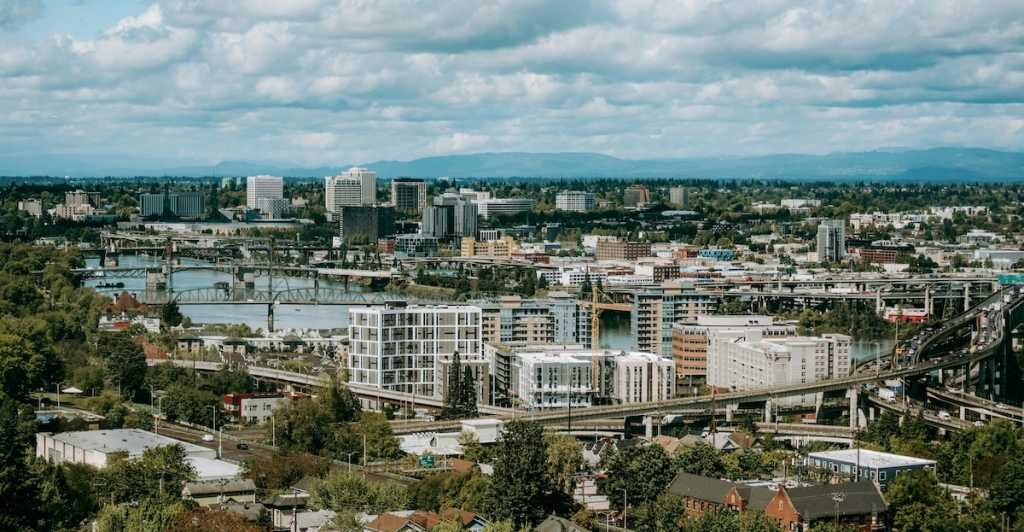Why Location is Key in Commercial Real Estate Investing
Category: Learn

One factor consistently stands out as a decisive element in determining the success or failure of a commercial real estate investment: location.
Just as a well-chosen locale can propel a property’s value and return on investment, an ill-advised one can lead to lackluster results, no matter how promising the property may seem.
Understanding location’s crucial role in commercial real estate is more than just a mantra for industry insiders—it’s an essential strategy for investors seeking to maximize their returns.
Think of it as the invisible hand guiding market trends, influencing rental income, and dictating future growth prospects.
The importance of location extends beyond mere geographical coordinates. It encompasses demographic factors, market trends, infrastructure availability, neighborhood characteristics, and governmental policies.
Below, we explore why location is key in commercial real estate investing and provide practical tips and tools for evaluating potential investment locations.
Why Location Matters in CRE
Location is a cornerstone that holds immense sway over an investment’s potential. Its influence affects various facets of property value and rental income, shaping an investment’s success trajectory.
The desirability of a location can significantly enhance a property’s worth. Prime locations with robust amenities, good infrastructure, and favorable demographics often command higher property values. Conversely, properties in less desirable areas may struggle to achieve comparable values, irrespective of their intrinsic qualities.
A property’s location also influences rental income and occupancy rates. Commercial tenants gravitate towards locations that boost their visibility, accessibility, and potential for customer engagement. That’s why a strategically located property can attract high-quality tenants, command premium rents, and sustain high occupancy rates.
Lastly, locations with strong growth indicators, such as planned infrastructure improvements, positive demographic trends, and supportive government policies, can bolster a property’s future value and rental potential. It’s about more than where the property is today, but where it could be in the future.
Key Factors to Consider When Choosing a Location
Selecting the right location for a commercial real estate investment involves more than pinpointing a spot on a map. It requires a thorough understanding of various factors that influence the desirability and profitability of a location.
Demographics
Demographics form the bedrock of any location analysis. Population size, age distribution, income levels, and educational attainment can comprehensively depict who lives and works in an area. For instance, a location with a growing population and high-income levels may signal robust demand for retail or office spaces.
Market Trends
Understanding current and future market trends is crucial in predicting the demand for commercial space. This includes analyzing industry growth, employment trends, and shifts in consumer behavior. A location with solid market trends offers a fertile ground for commercial real estate investments.
Infrastructure
The availability and quality of infrastructure—public transportation, road networks, utilities—are vital for the functionality and accessibility of a commercial property. A well-connected location ensures ease of access for employees, customers, and suppliers, enhancing the property’s appeal.
Submarket Characteristics
Submarket characteristics refer to an area’s surrounding businesses, safety, aesthetics, and overall vibe. A vibrant neighborhood with diverse businesses and a safe, appealing ambiance can attract tenants and customers alike, thereby boosting the property’s value and rental income.
Government Policies
Government policies, including zoning laws, tax rates, and future development plans, can significantly impact a commercial property’s potential. Favorable policies can pave the way for growth and profitability, while restrictive ones pose challenges.
Environmental Considerations
Environmental factors such as climate, natural disaster risks, and sustainability initiatives can also impact the attractiveness of a location. For instance, properties in areas prone to flooding or earthquakes may incur higher insurance costs. On the other hand, locations with solid sustainability initiatives may attract eco-conscious tenants and customers.
Proximity to Suppliers and Competitors
A property’s proximity to suppliers and competitors can influence its operational efficiency and market position. Locations close to suppliers can reduce transportation costs, while those near competitors can foster a healthy business environment, attracting more customers to the area.
Local Labor Market
The local labor market is another essential consideration, especially for commercial properties that rely on a large workforce. Locations with a skilled labor pool can attract businesses, increasing the demand for commercial spaces.
How to Evaluate a Potential Investment Location
Evaluating a potential investment involves a blend of tools, techniques, and professional expertise that can provide insights into a location’s prospects.
Data Analysis
A comprehensive data analysis forms the backbone of location assessment. This includes studying demographic statistics, market trends, infrastructure details, submarket characteristics, and government policies. The objective is to gather as much information as possible to understand the dynamics of the location.
Site Visits
Physical site visits offer a firsthand view of the location and its surroundings. It allows investors to observe the property’s condition, the neighborhood vibe, traffic patterns, and nearby businesses. This on-the-ground perspective complements the findings from data analysis.
Comparative Market Analysis
Comparative market analysis is a technique that compares a location with similar areas with key parameters like population growth, rental rates, and property values. This comparison can highlight the relative strengths and weaknesses of a location.
Professional Real Estate Advisors and Consultants
Leveraging the expertise of professional real estate advisors and consultants can bring valuable insights to the evaluation process. They can provide nuanced perspectives based on their experience and understanding of the market, aiding in the interpretation of data and identification of potential risks and opportunities.
Platforms like Crexi Intelligence offer a wealth of resources for investors. They provide a comprehensive context for location evaluation with features like sales comps, property records, and interactive maps.
By adopting a holistic approach, investors can gain a deep understanding of a location’s potential and make strategic investment decisions.
The Bottom Line
In the complex matrix of factors that influence the success of a commercial real estate investment, location is a dominant factor.
It plays a pivotal role in determining property value, influencing rental income, and shaping future growth prospects. Beyond geographical considerations, it envelops critical aspects such as demographics, market trends, infrastructure, neighborhood characteristics, and governmental policies.
An optimal location can be the key to unlocking substantial returns and achieving financial goals. Conversely, overlooking the nuances of location can lead to underwhelming results, irrespective of how promising an investment may appear otherwise.
Location is more than just a physical attribute—it’s a strategic asset. Harnessing this asset effectively can be the difference between an average investment and an extraordinary one.
Find the location of your next commercial investment with Crexi.





